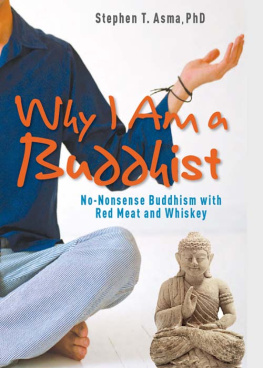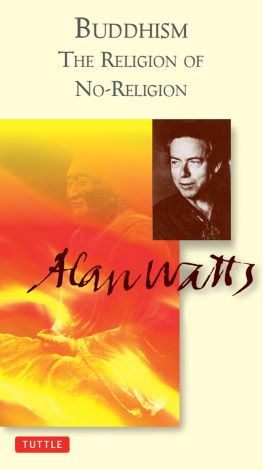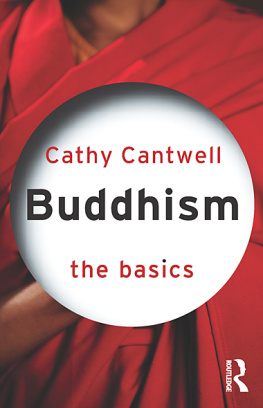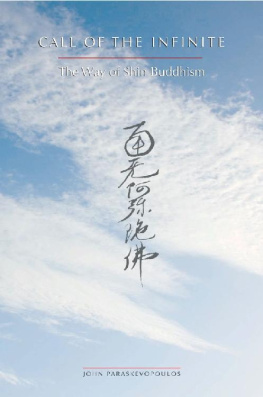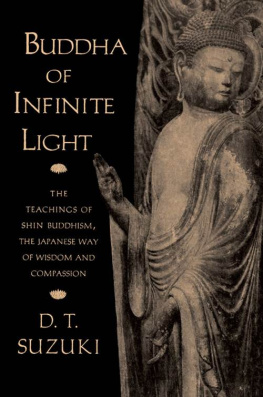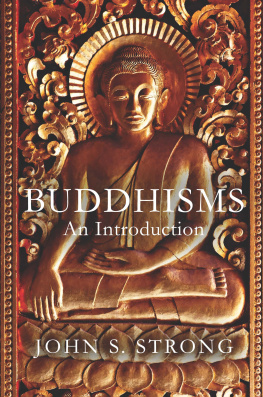POPULAR BUDDHISM IN JAPAN
SHIN BUDDHIST RELIGION & CULTURE
Popular Buddhism
in Japan
SHIN BUDDHIST
RELIGION & CULTURE
Esben Andreasen
WITH A FOREWORD AND POSTSCRIPT BY ALFRED BLOOM
POPULAR BUDDHISM IN JAPAN
SHIN BUDDHIST RELIGION & CULTURE
First published 1998 by
JAPAN LIBRARY
Published 2014 by Routledge
2 Park Square, Milton Park, Abingdon, Oxon OX14 4RN
711 Third Avenue, New York, NY 10017, USA
Routledge is an imprint of the Taylor & Francis Group, an informa business
Esben Andreasen 1998
All rights reserved. No part of this publication may be reproduced, stored in a retrieval system, or transmitted in any form or by any means, without prior permission in writing from the Publishers, except for the use of short extracts in criticism.
British Library Cataloguing in Publication Data
A CIP entry for this book is available from the British Library
ISBN 978-1-873-41076-9 (hbk)
Typeset in Goudy Old Style 11 on 12 pt by Bookman, Hayes, Middlesex
T o many people in the Western world Japanese Buddhism means Zen Buddhism. The images that Zen Buddhism call up are of silent meditation halls and austere discipline. Its perceived paradoxical logic, methods and atheism have made it popular among intellectuals in the West.
For at least two reasons this Western assumption is wrong: in Japanese Buddhism Zen is a minority sect and in many respects it is not very different from other branches of Buddhism. Also among ordinary Zen Buddhists there is widespread belief in gods. Like temples in general popular Zen temples are concerned with the moral guidance of families and the performance of burials and memorial services. All traditional Buddhist sects in Japan have roots in folk religion and ancestor worship.
The dominance of Zen is easily seen in the number of books on Zen in English in the West and in Japanese bookshops catering for Western tourists. The great popularizer of Japanese Buddhism, D.T. Suzuki, is mainly known as a Zen Buddhist, but in reality he also wrote books on Shin Buddhism. But they have not met the same demand. When the famous Japanese journal in English, The Eastern Buddhist, was first published in 1921 with Suzuki as one of the editors, the purpose was to transmit both Zen and Shin to the West, but in time Zen took over. The fact is that Shin Buddhism has considerably more followers than Zen even in the USA where immigrants who came to work on plantations and farms came from agricultural areas in Japan with strong connections to Shin Buddhism. The popularity of Zen in the USA, therefore, belongs to a different class of people, the more educated and intellectual. But also Shin Buddhism is a major contribution to Japanese culture, to quote D.T. Suzuki.
This introduction to Shin Buddhism in the form of a textbook originates from a wish I had in 1989 when I first visited Otani University, Kyoto, as a member of a European study tour. I realized that this more popular form of Buddhism was a neglected field in Western studies on Japanese religions. Subsequently, in the autumn of 1992, I was accepted as a visiting researcher at Otani University for six months with the intention of preparing an annotated description of Shin Buddhism through the use of a variety of extant texts.
In this book I have chosen to focus on religious practice and to a lesser extent I have selected material illustrating the theology of Shin Buddhism. This is partly to reflect my own understanding of what is most important, and partly due to the fact that religion in Japan is a matter of tradition and ritual, less a matter of formalized dogmatics.
Thus, the contents include the history of Shin Buddhism, especially the founder Shinran and the modern age, and the rituals of the religion. In addition, there are chapters on the influence of Shin Buddhism on arts and crafts, on Shin Buddhist education, and a chapter on Shin Buddhism in Hawaii seen from the point of view of culture clash. Texts with no author attribution are written by me and are mainly descriptions of ceremonies or interviews.
I wish to thank my advisers at Otani University: Professor Minoru Tada, my senior adviser, and Professor Yasutomi Shinya, who also acted as my interpreter and invited me to participate in the Ho-onko at his fathers temple. Also President Terakawa Shunsho, Dean Furuta Kazuhiro and Dean Minoura Eryo. Likewise, the administration at Higashi Honganji, especially Rev. Fujii Shoryo, who was my link with the head temple. Moreover, I wish to thank Rev. Dennis Hirota, Hongwanji International Center, who I am especially grateful for suggestions and texts regarding Shin Buddhism and the arts of Japan. Finally, I would like to thank Lecturer Higuchi Shoshin, my travelling companion to Hawaii, and Mr Kamata Tetsuo, who travelled with me to Toyama both from Otani University. For his invaluable help in editing the book and for writing a Foreword and Postscript I wish to thank Professor Alfred Bloom wholeheartedly. Any short-comings or inaccuracies that may be found in the book are entirely my responsibility.
According to Japanese custom, all Japanese names appear with family names first.
ESBEN ANDREASEN
T he field of Pure Land Studies and Jodo Shin Buddhism, in particular, has begun increasingly to attract interest among scholars of religion, theologians and ordinary people, because it combines a highly developed symbol system, a devotional focus and philosophic, reflective thought. Once considered by foreign observers as a debased, popular form of Buddhism because of its mass appeal, more recent and accurate research has shown that its exponents may be critical thinkers, as well as committed followers, and that its insights into the human condition should not be underestimated merely because of its reputation as one of the largest Buddhist denominations in Japan.
In the present text, the author makes a significant contribution to our knowledge of the Shin Buddhist faith by bringing together a variety of resources which offer insight into such diverse dimensions of the tradition as documents from its early beginnings, examples of modern interpretation, and representative pieces on cultural, religious and organizational life. The text goes beyond merely doctrinal considerations, enabling the reader to gain a broad perspective on the contemporary situation of the sect.
Mr Andreasen is to be commended for his diligence in filling a need in Shin Buddhist studies with his anthology of historical and contemporary resources of Shin Buddhism, not all easily available to Western students. His text will enable a deeper study of this significant strand of Japanese Buddhism.
Professor Emeritus
Department of Religion
University of Hawaii
Cover illustrations: (Top) Amida Buddha altar at Kosai-ji temple, Murakami, Niigata Prefecture. (Bottom) Early painting of Shinran-Shonin, founder of the Jodo sect.
Gautama and Amitabha [NISON-IN, KYOTO]
Goutama and Amitabha (Nison-in, Kyoto)
T he threads of life are mysterious. My own experience is a case in point. Why did I become so engulfed in Buddhism and how did it happen that I came to like Japanese Shin Buddhism in particular?


